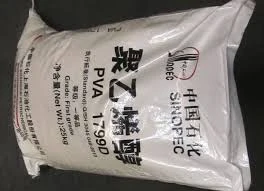Exploring Hypromellose A Versatile Polymer in Various Applications
Hypromellose, also known as hydroxypropyl methylcellulose (HPMC), is a semi-synthetic polymer derived from cellulose. This versatile compound has garnered attention across numerous industries due to its unique properties and functional benefits. Originally developed for use in food and pharmaceuticals, hypromellose has expanded its reach to applications in construction, cosmetics, and more.
Composition and Properties
Hypromellose is synthesized through the chemical modification of cellulose, a natural polymer found in plant cell walls. The process involves the substitution of hydroxyl groups on the cellulose molecule with hydroxypropyl and methoxy groups. This modification bestows hypromellose with several advantageous characteristics, such as improved solubility in water, a gel-like consistency when dissolved, and the ability to form thick solutions that enhance the texture and stability of various formulations.
One of the most appealing attributes of hypromellose is its biocompatibility, making it suitable for use in pharmaceutical applications. It is non-toxic and safe for consumption, which is particularly important when used in drug formulations and dietary supplements.
Pharmaceutical Applications
Hypromellose is widely utilized in the pharmaceutical industry for its role as an excipient. It is commonly found in controlled-release drug formulations, where it acts as a matrix to facilitate the slow release of active pharmaceutical ingredients (APIs) into the body. Its gel-forming properties help maintain the stability of the formulation, ensuring that the drug remains effective over time.
Additionally, hypromellose serves as a binder in tablet formulations, providing cohesiveness to the mixture of active and inactive ingredients. When used in ophthalmic products, such as eye drops and gels, it acts as a lubricant, enhancing comfort for patients suffering from dry eyes.
hpmc hypromellose

Applications in Food Industry
In the food sector, hypromellose is employed as a food additive, often labeled as E464 in Europe. It functions as a thickening agent, stabilizer, and emulsifier, playing a vital role in improving the texture and shelf-life of various products, including sauces, dressings, and baked goods. Its ability to retain moisture also helps in maintaining the freshness of food items, making it a valuable component in the food preservation process.
Furthermore, hypromellose is often used in gluten-free and low-fat formulations, as it mimics the binding properties of gluten and fats, providing the desired consistency in products without the unwanted nutritional aspects.
Role in Construction and Cosmetics
Beyond the pharmaceutical and food industries, hypromellose has made significant inroads into the construction and personal care sectors. In construction, it is an essential ingredient in dry mix formulations, such as tile adhesives and masonry mortars, where it enhances the workability and adhesion of the materials. It also improves water retention, allowing for better curing processes and reducing the risk of cracking.
In cosmetics, hypromellose is valued for its ability to enhance the texture and feel of products such as creams, lotions, and gels. It stabilizes emulsions and provides a velvety smooth texture, contributing to the overall sensory experience of using these products. Due to its non-irritating nature, it is also an ideal choice for sensitive skin formulations.
Conclusion
Hypromellose is a remarkable polymer with a vast array of applications across various industries. Its unique chemical composition and properties render it a crucial component in pharmaceuticals, food, construction, and cosmetics. As research and development in polymer sciences continue to advance, we may discover even more innovative uses for hypromellose, further solidifying its position as a key ingredient in modern formulations. Its biocompatibility, stability, and functional versatility ensure that hypromellose will remain an essential material for many years to come, guiding advancements in various fields and enhancing product performance across the board.
-
Rdp Powder Bonding Strength Enhancement in Tile AdhesiveNewsAug.28,2025
-
Hydroxypropyl Methyl Cellulose Water Retention in Cement MortarNewsAug.28,2025
-
Hpmc Detergent Grade Foam Stability in Liquid SoapsNewsAug.28,2025
-
Construction Adhesive HPMC Water Retention for Tile BondingNewsAug.28,2025
-
Chemical Auxiliary Agent HPMC Thickening in Wall PuttyNewsAug.28,2025
-
Building Adhesive HPMC Anti-Crack Properties in Cement BlendsNewsAug.28,2025




